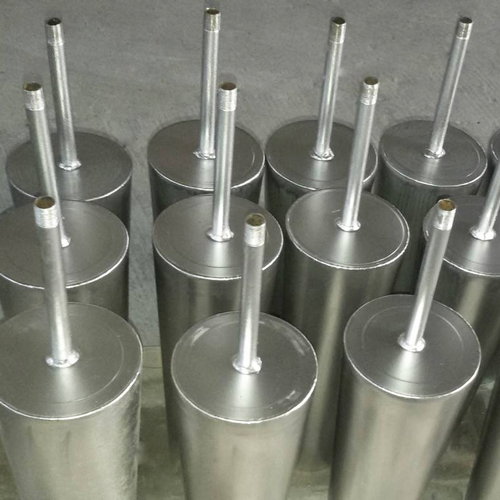- 27
- Dec
Precautions for use of impermeable ventilated bricks
Precautions for use of impermeable ventilated bricks
Out-of-furnace refining has become an important part of the modern steelmaking process. Blowing argon from the bottom of the ladle is also an important part of the refining outside the furnace. The ladle air-permeable brick is the key element to realize this process, and steel-making manufacturers are particularly concerned. A good air-permeable brick should have the characteristics of long service life, good bottom blowing effect, no (less) blowing, safe and reliable. The current breathable bricks mainly include slit type and impermeable type. The width and distribution of the slits of the slit-type ventilating bricks must be reasonably designed according to the ladle capacity, smelting steel type and the required air permeability, so the production process is more complicated; the impermeable ventilating bricks are controlled by the particle size ratio of the ingredients To produce a large number of irregularly distributed through pores, the production process is relatively simple.
The impermeable air-permeable brick adopts the structure of the air-permeable inner core and dense high-strength materials: the working area of the brick core is an impermeable design, and the security device adopts a slit design. When a slit gas channel is observed, it indicates air permeability If the brick residual height is insufficient, the breathable brick needs to be replaced.

Şəkil 1 Nəfəs ala bilən kepçe
In the process of transportation and installation of air-permeable bricks, it is necessary to ensure that the threads of the tail steel pipes are not damaged, so as not to cause loose pipe connections and air leakage, which will affect the argon blowing flow and blowing rate; ensure that the tail steel pipes do not enter dust and sundries; ensure that the air-permeable bricks The working face is not covered by fire mud or other materials to avoid unsuccessful bottom blowing. During installation or use, ensure that the pipeline is tightly connected and does not leak air, otherwise the argon pressure is insufficient, which will affect the stirring effect and cause the blow-through rate to drop.
The alloy is added too early when the converter is tapped, and the molten steel level in the ladle is too low, and the low and highly permeable alloy melting point will easily lead to poor permeability of the brick core. In addition, the premature addition of alloying leads to a lower temperature at the bottom of the ladle; if the argon blowing operation is not standardized, and the large argon gas is not stirred in time after tapping, it will easily lead to the difficulty of blowing off in the early stage of refining.
Severe encrustation at the bottom of the ladle, there are many online turnover ladle, slag can be discharged in time after the completion of steel pouring, hot repair does not blow the breathable brick, the hot stop time of the ladle is long, the temperature of molten steel tapping is low, etc., all easily cause the surface of the brick core Residual molten steel and steel slag are easy to crust on the surface and affect air permeability.
